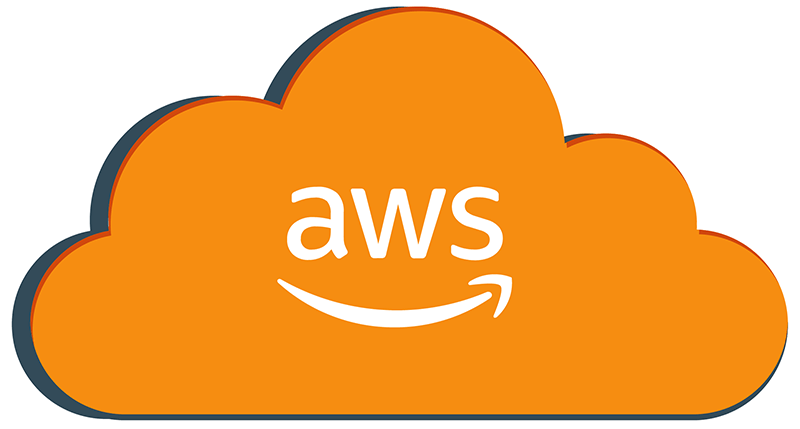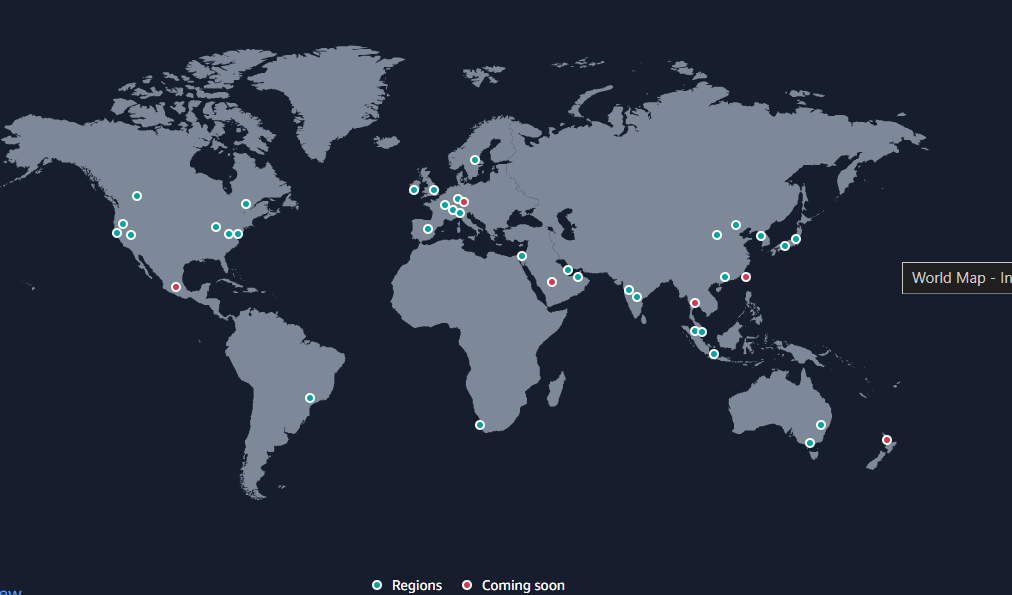A Beginner's Guide to AWS Pricing Models and Cloud Computing Concepts
 Anas
Anas
Introduction
Hey there, fellow tech enthusiasts! Are you curious about cloud computing and how it can benefit your business? Look no further! In this post, we'll explore the different pricing models offered by AWS, differentiate between on-premises, on-cloud, and hybrid cloud computing models, and delve into IAAS, PAAS, and SAAS with examples.
Pricing Models Offered by AWS
AWS offers a pay-as-you-go pricing model, which means you only pay for the resources you use. This is like paying for the number of guests who attend your party, rather than paying for a fixed number of guests. This model is beneficial for businesses with variable or unpredictable workloads.
For example, let's say you're a retailer who experiences a surge in sales during the holiday season. With AWS's pay-as-you-go pricing model, you can scale up your resources to meet the increased demand, and then scale down when the demand decreases.
On-Premises, On-Cloud, and Hybrid Cloud Computing Models
Cloud computing models can be broadly classified into three categories: on-premises, on-cloud, and hybrid.
On-Premises
On-premises cloud computing is like hosting your party at your own home. You have complete control over the venue, food, and guest list. This model is similar to legacy IT infrastructure, but with the added benefits of virtualization and resource management.
For example, let's say you're a bank that needs to store sensitive customer data. You may choose to deploy your resources on-premises to ensure complete control over the data.
On-Cloud
On-cloud cloud computing is like hosting your party at a restaurant. The restaurant provides the venue, food, and staff, and you only need to manage the guest list. This model provides scalability, flexibility, and cost savings.
For example, let's say you're a startup that needs to deploy a new application quickly. You may choose to deploy your resources on the cloud to take advantage of the scalability and cost savings.
Hybrid
Hybrid cloud computing is like hosting your party at a restaurant, but also having a backup plan to host it at your home if needed. This model provides the benefits of both on-premises and on-cloud deployment models.
For example, let's say you're a hospital that needs to deploy a new electronic health record system. You may choose to deploy the system on-premises for sensitive patient data, but also use the cloud for scalable workloads.
IAAS, PAAS, and SAAS
Cloud computing can be further classified into three service models: IAAS, PAAS, and SAAS.
IAAS (Infrastructure as a Service)
IAAS is like renting a venue for your party. You have complete control over the venue, but you need to manage the food, decorations, and guest list.
For example, let's say you're a developer who needs to deploy a new application. You may choose to use IAAS to have complete control over the infrastructure, but also need to manage the application and data.
Examples of IAAS include AWS ec2 ,DigitalOcean, Linode, and Rackspace
PAAS (Platform as a Service)
PAAS is like hiring a party planner who takes care of the venue, food, and decorations. You only need to manage the guest list.
For example, let's say you're a developer who needs to deploy a new application quickly. You may choose to use PAAS to have a cost-effective way to develop and deploy the application.
Examples of PAAS include AWS Lambda, Google App Engine, and IBM Cloud
SAAS (Software as a Service)
SAAS is like using a party planning service that takes care of everything, including the guest list. You only need to show up to the party.
For example, let's say you're a business user who needs to use a software application. You may choose to use SAAS to have access to the application without needing to install, configure, and manage it.
Examples of SAAS include Google Workspace, Dropbox, and Salesforce
AWS Pricing Models: Which One is Right for You?
When it comes to cloud computing, one of the biggest decisions you'll make is choosing the right pricing model. AWS offers several pricing models, each with its own benefits and drawbacks. In this section, we'll break down the main pricing models offered by AWS, and explain them in simple terms with real-life examples.
On-Demand Instances
Cost: Pay by the hour or by the second
Commitment: No long-term commitment or upfront costs
Example: Imagine you're a freelancer who needs a computer for a short-term project. You can rent a computer by the hour or by the day, and return it when you're done. You only pay for the time you use it.
Reserved Instances
Cost: Discounted rate for a 1- or 3-year commitment
Commitment: Long-term commitment to use a specific amount of resources
Example: Think of it like buying a car. You can pay a higher upfront cost to own the car, or you can lease it for a lower monthly payment over a set period of time.
Reserved Instances are like leasing a car - you commit to using the resources for a set period, and you get a discount.
Spot Instances
Cost: Discounted rate for unused resources
Commitment: No long-term commitment, but resources can be interrupted
Example: Imagine you're a traveler who needs a hotel room for a night. You can bid on a last-minute deal for a discounted rate, but you might get kicked out if the hotel needs the room for someone else.
Spot Instances are like bidding on a last-minute hotel deal - you get a discount, but you might lose access to the resources if AWS needs them elsewhere.
Pay-As-You-Go
Cost: Pay only for what you use
Commitment: No long-term commitment or upfront costs
Example: Think of it like using a taxi service. You only pay for the ride you take, and you don't have to commit to using the service for a set period of time.
Pay-As-You-Go is like using a taxi service - you only pay for what you use.
By understanding the different pricing models offered by AWS, you can choose the one that best fits your needs and budget. Whether you need flexibility, predictability, or cost savings, there's an AWS pricing model that's right for you.
History of AWS
The Early Days (2002-2004)
AWS started as a tiny project within Amazon to support its e-commerce platform.
The first service, Simple Queue Service (SQS), was launched in 2004. It was a humble beginning, but little did we know what was to come.
Growing Pains (2005-2008)
In 2006, AWS launched its first cloud computing service, Elastic Compute Cloud (EC2). This was a game-changer. Simple Storage Service (S3) followed soon after, providing a safe and scalable way to store data.
By 2008, AWS had added more services like Elastic Block Store (EBS) and CloudWatch.
Innovation Overdrive (2009-2012)
AWS introduced Relational Database Service (RDS) in 2009, making it easy to set up and manage databases.
Elastic Beanstalk was launched in 2010, which helped deploy web applications quickly.
By 2012, AWS had added DynamoDB, a fast NoSQL database, and CloudFormation, a service for infrastructure as code.
Going Global (2013-2015)
AWS expanded its reach by opening new regions in Europe, Asia, and South America.
In 2014, the AWS Partner Network (APN) was launched to support its growing partner ecosystem.
By 2015,
AWS had introduced its first machine learning service, Amazon Machine Learning.
AI and ML Revolution (2016-2018)
In 2016, AWS launched Amazon Lex, a conversational interface for building chatbots. SageMaker, a machine learning platform, was introduced in 2017.
By 2018, AWS had launched its first autonomous drone service, Amazon Ground Station, for satellite data processing.
Cloud Dominance (2019-Present)
In 2019, AWS launched its first quantum computing service, Amazon Braket.
By 2020, AWS Wavelength, a 5G edge computing service, was introduced. Today, AWS is the largest cloud computing provider,
The AWS Cloud spans 108 Availability Zones within 34 geographic regions, with announced plans for 18 more Availability Zones and six more AWS Regions in Mexico, New Zealand, the Kingdom of Saudi Arabia, Thailand, Taiwan, and the AWS European Sovereign Cloud.

Conclusion
In conclusion, understanding the different pricing models offered by AWS, as well as the different cloud computing models and service models, is essential for businesses looking to leverage the benefits of cloud computing. By choosing the right pricing model and cloud computing model, businesses can optimize their costs, improve their scalability, and increase their flexibility.
If you found this post informative and helpful, please give it a like!
Share this post with your friends and colleagues who might be interested in learning about cloud and DevOps.
Subscribe to my newsletter
Read articles from Anas directly inside your inbox. Subscribe to the newsletter, and don't miss out.
Written by
